Isthmian Games
|
Read other articles:

Cet article est une ébauche concernant le Dakota du Nord. Vous pouvez partager vos connaissances en l’améliorant (comment ?) selon les recommandations des projets correspondants. Comté de DickeyDickey County Le palais de justice d'Ellendale, siège du comté (1915). Administration Pays États-Unis État Dakota du Nord Chef-lieu Ellendale Fondation 1881 Démographie Population 4 999 hab. (2020) Densité 1,7 hab./km2 Géographie Coordonnées 46° 07′ nord, 98°…

Voce principale: HUGtto! Pretty Cure. Logo occidentale della serie Lista degli episodi di HUGtto! Pretty Cure, quindicesima serie anime di Pretty Cure, trasmessa in Giappone su TV Asahi dal 4 febbraio 2018[1] al 27 gennaio 2019. In Italia è inedita. La sigla originale di apertura, We can!! HUGtto! Precure (We can!!HUGっと!プリキュア?), è cantata da Kanako Miyamoto, mentre quelle di chiusura, HUGtto! Mirai☆Dreamer (HUGっと!未来☆ドリーマ�…

هنودمعلومات عامةنسبة التسمية الهند التعداد الكليالتعداد قرابة 1.21 مليار[1][2]تعداد الهند عام 2011ق. 1.32 مليار[3]تقديرات عام 2017ق. 30.8 مليون[4]مناطق الوجود المميزةبلد الأصل الهند البلد الهند الهند نيبال 4,000,000[5] الولايات المتحدة 3,982,398[6] الإمارا�…
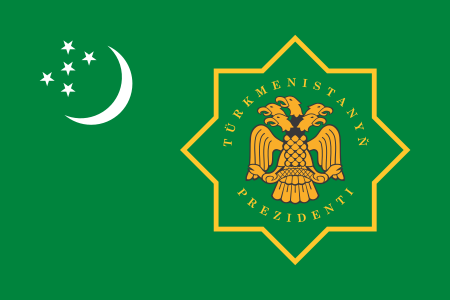
土库曼斯坦总统土库曼斯坦国徽土库曼斯坦总统旗現任谢尔达尔·别尔德穆哈梅多夫自2022年3月19日官邸阿什哈巴德总统府(Oguzkhan Presidential Palace)機關所在地阿什哈巴德任命者直接选举任期7年,可连选连任首任萨帕尔穆拉特·尼亚佐夫设立1991年10月27日 土库曼斯坦土库曼斯坦政府与政治 国家政府 土库曼斯坦宪法 国旗 国徽 国歌 立法機關(英语:National Council of Turkmenistan) 土�…

هذه المقالة عن ابن قيّم الجوزية. لمعانٍ أخرى، طالع ابن الجوزي (توضيح). الإمام ابن قيّم الجوزية أبو عبد الله شمس الدين محمد بن أبي بكر بن أيوب بن سعد بن حريز الزرعي تخطيط اسم ابن قيِّم الجوزية بخط الثُّلُث. معلومات شخصية الميلاد 7 صفر 691هـ/28 يناير 1292مزرع أو دمشق، بلاد الشام…
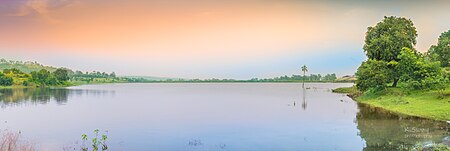
This article is about the City. For its eponymous Taluka, see Gadhinglaj Taluka. This article needs additional citations for verification. Please help improve this article by adding citations to reliable sources. Unsourced material may be challenged and removed.Find sources: Gadhinglaj – news · newspapers · books · scholar · JSTOR (July 2013) (Learn how and when to remove this message) City in Maharashtra, IndiaGadhinglajCityNickname(s): Hinglaj , Ka…

American college football season 2023 Bethune–Cookman Wildcats footballConferenceSouthwestern Athletic ConferenceDivisionEast DivisionRecord3–8 (2–6 SWAC)Head coachRaymond Woodie (1st season)Co-offensive coordinatorDonte' Pimpleton (1st season)Co-offensive coordinatorJoe Gerbino (1st season)Defensive coordinatorRobert Wimberly (1st season)Home stadiumDaytona StadiumSeasons← 20222024 → 2023 Southwestern Athletic Conference football standings vt…

Italian political party Coraggio Italia PresidentLuigi BrugnaroVice PresidentMichaela BiancofioreFounded27 May 2021; 3 years ago (2021-05-27)Split fromForza ItaliaHeadquartersVia Gaspare Spontini 22, RomeIdeologyLiberal conservatismPolitical positionCentre[1] tocentre-right[1][2][3]National affiliationElectoral list:Us Moderates (2022–2023)Coalition:Centre-right coalitionColours Fuchsia IndigoChamber of Deputies1 / 400Sen…

Human-created solid waste in the sea or ocean Ocean dumping redirects here. For shipping of waste across international borders, see Environmental dumping. Marine debris washed up on a beach at Sharm el-Naga, Egypt Part of a series onPollutionAir pollution from a factory Air Air quality index Atmospheric dispersion modeling Chlorofluorocarbon Combustion Exhaust gas Haze Global dimming Global distillation Indoor air quality Ozone depletion Particulates Persistent organic pollutant Smog Soot Volati…

Criminal law Elements Actus reus Mens rea Causation Concurrence Scope of criminal liability Accessory Accomplice Complicity Corporate Principal Vicarious Severity of offense Felony (or Indictable offense) Infraction (also called violation) Misdemeanor (or Summary offense) Inchoate offenses Attempt Conspiracy Incitement Solicitation Offense against the person Assassination Assault Battery Child abuse Criminal negligence Defamation Domestic violence False imprisonment Frameup Harassment Home invas…

This article is about the academic field. For actual economic histories, see Economic history of the world. For the history of intellectual development of economic theory, see History of economic thought. Part of a series onEconomic history Particular histories of Advertising Business Capitalism Labor Money Retail Social democracy Economics events Recession Economic miracle Financial crisis Shock Prominent examples Economic antisemitism Economic history of the Arab world Economy of the Inca Empi…

Area in Kingston upon Hull, England Human settlement in EnglandMarfleetMarfleetLocation within the East Riding of YorkshireOS grid referenceTA144297Unitary authorityKingston upon HullCeremonial countyEast Riding of YorkshireRegionYorkshire and the HumberCountryEnglandSovereign stateUnited Kingdom List of places UK England Yorkshire 53°45′04″N 0°15′49″W / 53.7512°N 0.2636°W / 53.7512; -0.2636 Marfleet is an area of Kingston upon Hull, E…

Perumpamaan ragi, karya Dalziel Bersaudara, 1864 Perumpamaan tentang ragi adalah sebuah perumpamaan yang diajarkan oleh Yesus kepada murid-muridnya. Kisah ini tercantum di dalam Matius 13:33 dan Lukas 13:20-21 sebagai kelanjutan dari perumpamaan biji sesawi. Kedua versi ini hampir serupa. Perumpamaan ini merupakan salah satu perumpamaan terpendek yang digunakan Tuhan Yesus. Ragi [Yesus berkata:] Hal Kerajaan Sorga itu seumpama ragi yang diambil seorang perempuan dan diadukkan ke dalam …

American biologist (1910–1972) Kitty Harrison redirects here. For the tennis coach, see Kitty Harrison (tennis). Katherine OppenheimerWartime Los Alamos identification badge photo, c. 1944BornKatherine Vissering Puening(1910-08-08)August 8, 1910Recklinghausen, German EmpireDiedOctober 27, 1972(1972-10-27) (aged 62)Panama City, PanamaOther namesKatherine RamseyerKatherine DalletKatherine HarrisonEducationUniversity of PittsburghUniversity of Pennsylvania (BS)University of WisconsinPol…
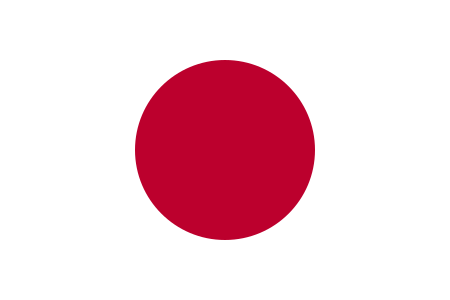
ملعب توهوكو دينريوكو بيغ سوانمعلومات عامةالمنطقة الإدارية Chūō-ku (en) البلد اليابان موقع الويب denka-bigswan.com التشييد والافتتاحالافتتاح الرسمي 29 أبريل 2001 المقاول الرئيسي آلبيركس نيغاتا الاستعمالالرياضة كرة القدم المستضيف آلبيركس نيغاتا Albirex Niigata Ladies (en) المالك نييغاتا الإدارة…

لمعانٍ أخرى، طالع مسجد الحاج (توضيح). مسجد الحاج محمد حسين إحداثيات 32°19′09″N 54°01′16″E / 32.319166666667°N 54.021111111111°E / 32.319166666667; 54.021111111111 معلومات عامة الموقع أردكان[1][2] القرية أو المدينة أردكان، محافظة يزد الدولة إيران تاريخ الافتتاح الرسمي 1834[2&…

Quick, temporary change in amplitude of electrical signals Examples of pulse shapes: (a) rectangular pulse, (b) cosine squared (raised cosine) pulse, (c) Dirac pulse, (d) sinc pulse, (e) Gaussian pulse A pulse in signal processing is a rapid, transient change in the amplitude of a signal from a baseline value to a higher or lower value, followed by a rapid return to the baseline value.[1] Pulse shapes Pulse shapes can arise out of a process called pulse-shaping. Optimum pulse shape depen…

Multi-purpose indoor arena in Saitama, Japan Saitama Super ArenaLocation8 Shintoshin, Chūō-ku, Saitama, Saitama, JapanPublic transit JR East: Saitama-Shintoshin ■ Takasaki Line■ Utsunomiya Line ■ Keihin-Tōhoku Line Kita-Yono ■ Saikyō LineOwnerSaitama Arena Corp.Capacity36,500 (maximum capacity)27,000 (stadium setting)22,500 (arena setting)[3]ConstructionOpenedSeptember 1, 2000; 23 years ago (2000-09-01)Construction costYEN ¥ 20 billion USD $ 195 million EUR…
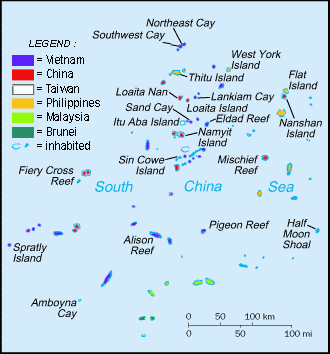
The Spratly Islands Part of a series on theSpratly IslandsSpratly Islands military occupations map Related articles Spratly Islands dispute Territorial disputes in the South China Sea Philippines and the Spratly Islands Dangerous Ground (South China Sea) Great Wall of Sand History of the Spratly Islands List of maritime features in the Spratly Islands List of airports in the Spratly Islands Vietnamese DK1 rigs Royal Malaysian Navy Offshore Bases Republic of Morac-Songhrati-Meads Free Territory o…
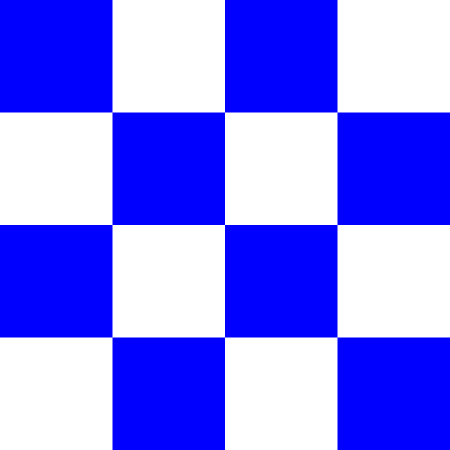
Omaha-class light cruiser For other ships with the same name, see USS Omaha. USS Omaha (CL-4), in New York Harbor, 10 February 1943. History United States NameOmaha NamesakeCity of Omaha, Nebraska Ordered29 August 1916 Awarded 26 December 1916 21 February 1919 (supplementary contract) BuilderTodd Dry Dock and Construction Company, Tacoma, Washington Cost$1,541,396 (cost of hull & machinery)[1] Laid down6 December 1918 Launched14 December 1920 Sponsored byLouise Bushnell White Co…
